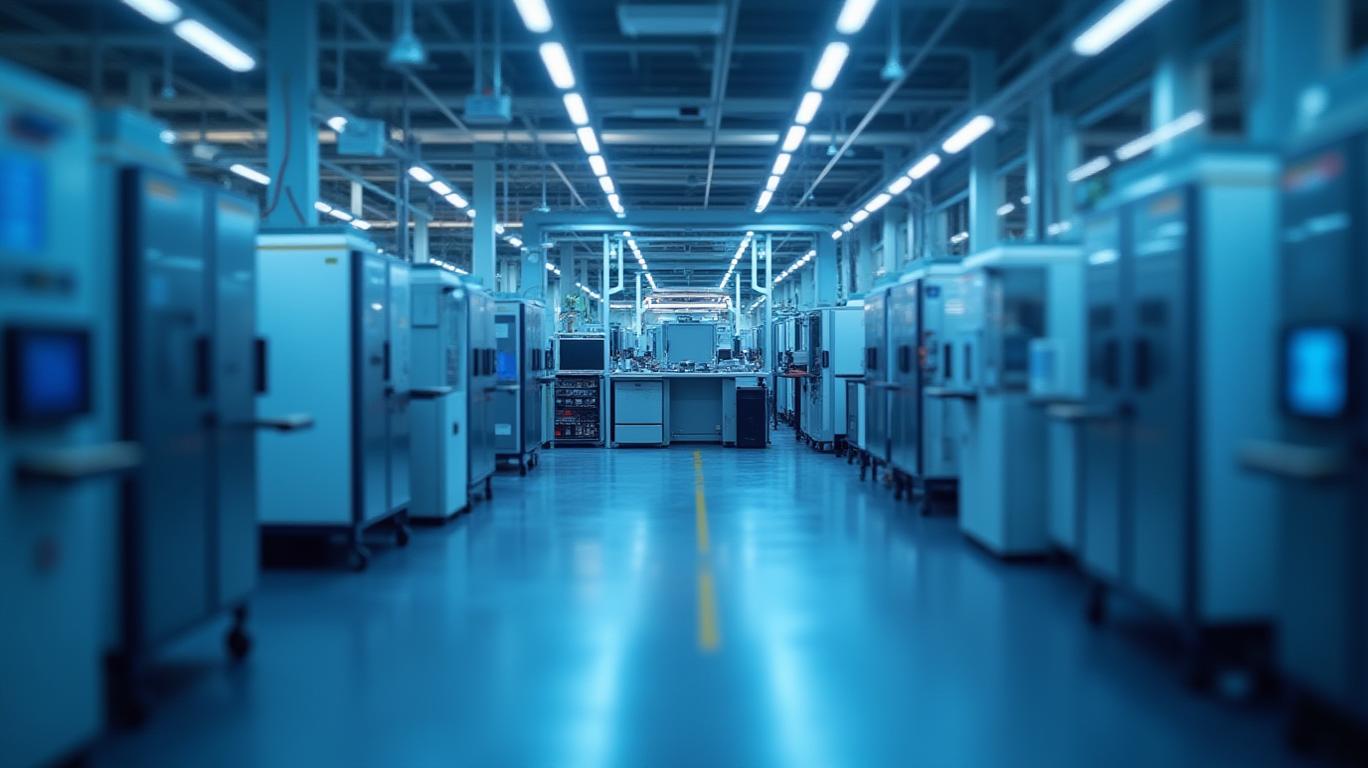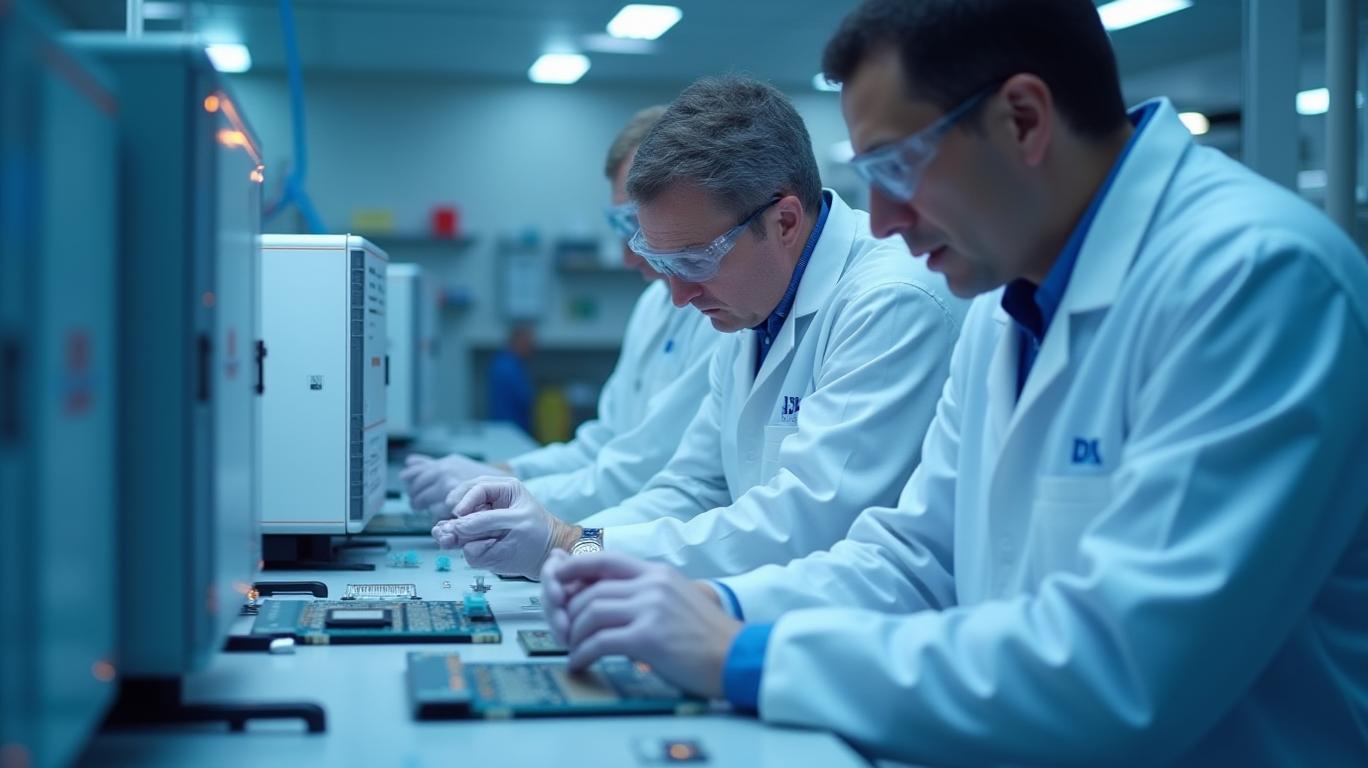Teradyne's Semiconductor Surge vs. Macro Headwinds: A Stock in Transition
Teradyne (NASDAQ: TER), a leader in semiconductor testing and industrial automation, finds itself at a crossroads in early 2025. While the company’s core semiconductor business thrives amid AI-driven demand, macroeconomic and geopolitical challenges cast a shadow over its outlook. Analysts are divided: some see a 28.5% upside to $97.50, while others warn of a potential 30% downside to $68. The stock’s performance reflects this tension, with a -39% year-to-date decline as of April 2025, ranking it among the S&P 500’s worst performers.

Q1 2025 Results: Strength in Semiconductors, Struggles in Robotics
Teradyne’s first-quarter results highlighted its dual identity. Revenue rose 14% YoY to $686 million, driven by its Semiconductor Test division, which accounts for 87% of total revenue. This segment benefited from strong demand for memory testing (e.g., HBM4 high-bandwidth memory) and AI accelerator chips. Non-GAAP EPS jumped to $0.75, surpassing estimates.
However, the Robotics and Industrial Automation division posted a $22 million operating loss, with revenue down 4% YoY to $69 million. Management cited weak demand in automotive and European markets, exacerbated by lingering trade policy uncertainty.
Bull Case: Semiconductor Dominance and AI Catalysts
Bulls argue that Teradyne’s $1.4 billion total addressable market in semiconductor testing positions it to capitalize on AI’s compute revolution. Key tailwinds include:
- Memory Testing Growth: The shift to advanced memory like HBM4 and AI-specific chips is driving demand for Teradyne’s high-margin testers.
- PC Demand Surge: The end of Windows 10 support is boosting PC upgrades, increasing tester utilization for non-CPU components.
- AI R&D Investment: The company plans to allocate 15–20% higher operating expenses to AI-driven solutions, aiming to lead in system-level testing (SLT) for complex chips.
Analyst Mehdi Hosseini of Susquehanna backs this narrative, maintaining a "Positive" rating and a $133 price target (75% upside), citing Teradyne’s “pole position” in semiconductor testing.
Bear Case: Margin Pressures and Trade Risks
Bears highlight execution risks and macro headwinds:
- Slowing Robotics Growth: The Robotics segment, once a growth engine, is now projected to grow only 5–10% in 2025, down from prior expectations.
- Margin Squeeze: Elevated R&D spending and a weaker revenue mix could compress margins. Operating expenses rose 15% YoY in Q1, squeezing net margins to 19.9% from 24.5% in 2024.
- Trade Policy Uncertainty: Tariffs and geopolitical tensions, particularly with China, could delay recovery in industrial markets.
Morgan Stanley’s Joseph Moore downplays these risks, assigning an "Underweight" rating and a $68 price target, arguing that valuation and margin pressures make TER overpriced at current levels.
Valuation and Contrasting Analyst Views
- Consensus Rating: "Strong Buy" with a $97.50 median target (28.5% upside from $75.88).
- High Risk/Reward: The price target range spans $68–$133, reflecting starkly different views on Teradyne’s ability to navigate macro challenges.
- Quantitative Contradiction: The Zacks Rank #4 (Sell) reflects skepticism over declining EPS estimates, which have been cut by 1.6% to $3.32 for 2025.
Investment Outlook: A Stock for the Long Game?
Teradyne’s story is one of short-term pain and long-term promise. The company’s semiconductor leadership and AI investments position it to benefit from secular trends in compute infrastructure. However, near-term risks—including Robotics division underperformance, margin pressures, and trade uncertainties—could keep the stock volatile.
The median price target of $97.50 suggests investors should wait for a pullback below $80 to buy, while bulls betting on semiconductor demand may find value even at current levels.
Conclusion
Teradyne’s stock is a microcosm of the broader tech sector: high growth potential in select areas, but exposed to macroeconomic and geopolitical headwinds. The consensus "Strong Buy" rating and Susquehanna’s $133 target reflect optimism about its semiconductor dominance, while bears’ warnings underscore the risks.
Investors must weigh the 14% YoY revenue growth and $98 million free cash flow in Q1 against the 5–10% full-year revenue guidance cut and Robotics division struggles. For those with a long-term horizon, TER’s 21.6x P/E ratio and $1 billion buyback plan offer reasonable entry points. However, near-term volatility—driven by trade policy and margin concerns—means this is not a stock for the faint-hearted.
Final Take: Buy on dips below $80 for a long-term bet on semiconductor testing growth, but brace for volatility. The upside to $133 is compelling, but so are the risks.










